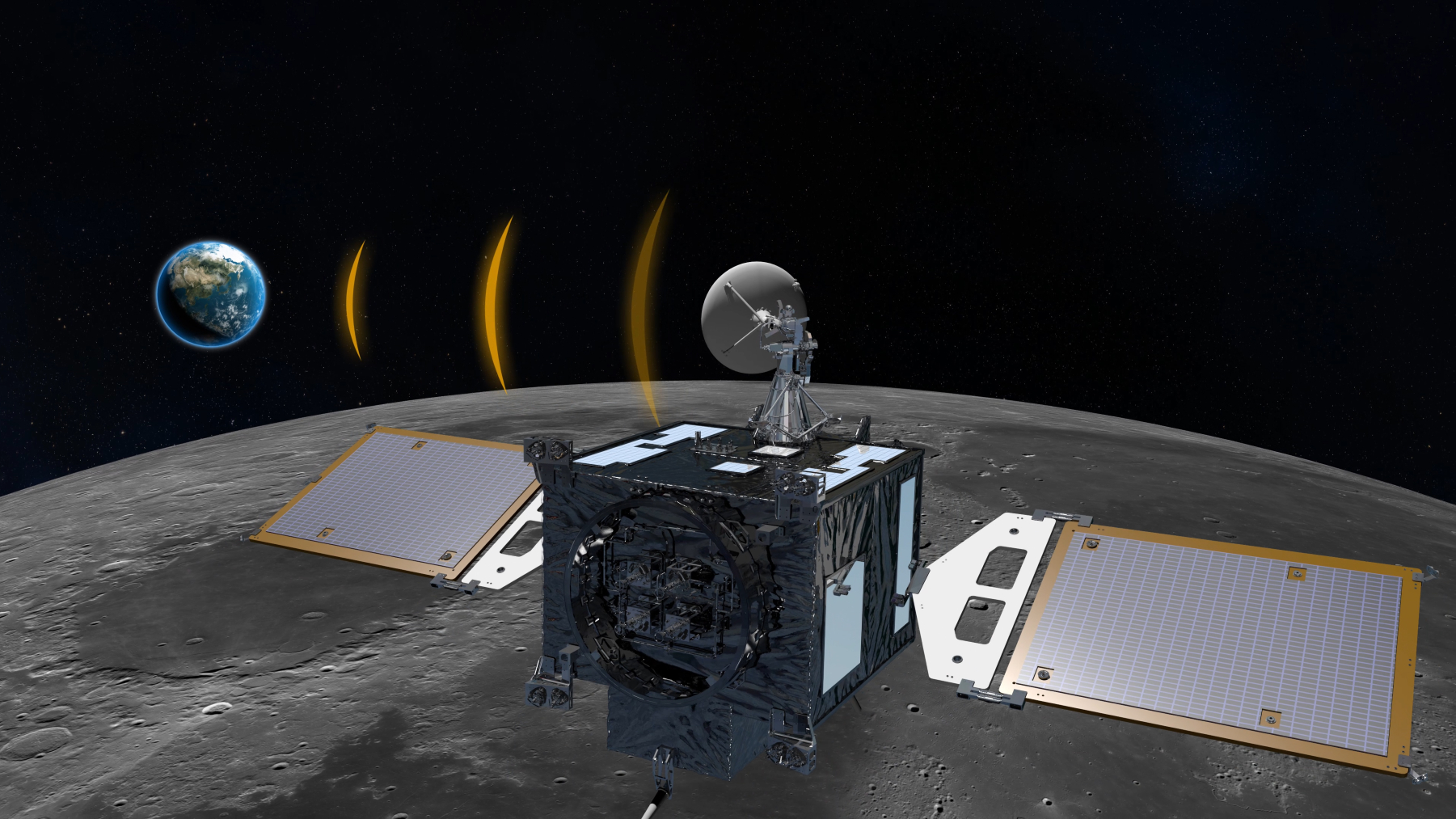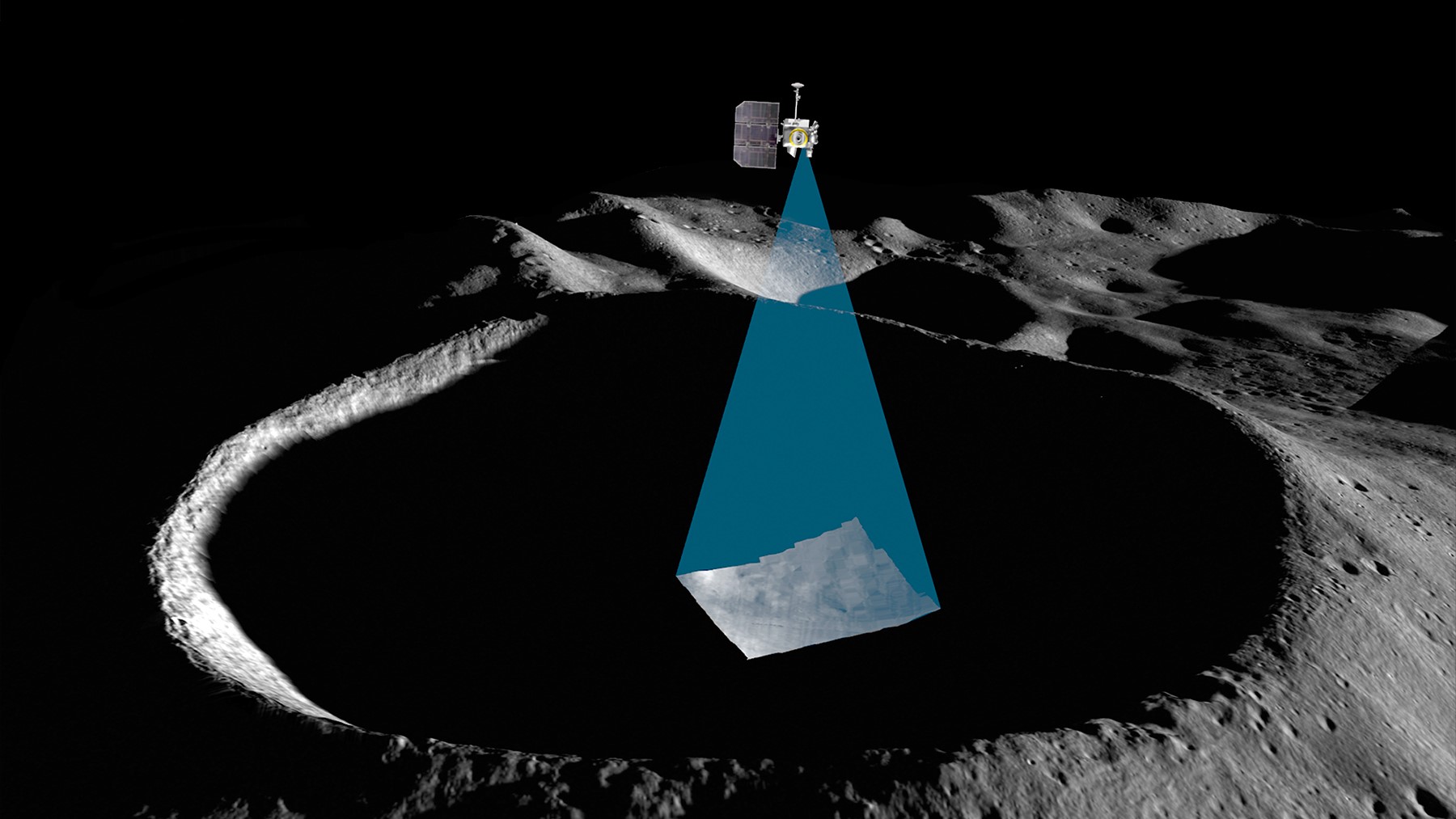Danuri: Facts about the Korea Pathfinder Lunar Orbiter (KPLO)
Danuri is the Republic of Korea's first exploratory space mission to travel beyond Earth's orbit.

The Korea Pathfinder Lunar Orbiter (KPLO), officially named Danuri, is the Korea Aerospace Research Institute's (KARI) first exploratory space mission outside of Earth's orbit.
Danuri launched on Aug. 4, 2022, atop a SpaceX Falcon 9 rocket from Cape Canaveral Space Force Station, Florida at 7:08 p.m. EDT (2308 GMT).
The spacecraft arrived in lunar orbit in mid-December 2022, after more than a four-month journey. It will orbit our rocky companion for about a year, taking measurements of the lunar surface and identifying potential landing sites for future missions, according to NASA. Data collected from Danuri will also help support the planning of NASA's Artemis program.
Related: Where will NASA set up its moon base?
Launch date: August 4, 2022
Launch vehicle: Falcon 9
Launch site: Cape Canaveral, Florida
Mass: 1,495 lbs (678 kilograms)
Target: Moon
Funding agency: Korea Aerospace Research Institute (KARI)
Notable firsts: South Korea's first lunar mission
Danuri is a joint mission between KARI and NASA with KARI managing the manufacturing and operation of the orbiter while NASA supports the mission with the development of one of the scientific payloads as well as aiding spacecraft communications and navigation, according to an agreement signed in 2016.
"The KPLO Participating Scientist Program is an example of how international collaborations can leverage the talents of two space agencies, to achieve greater science and exploration success than individual missions," Sang-Ryool Lee, the KPLO Project Manager, said in a NASA statement.
"It's fantastic that the Korea Aerospace Research Institute (KARI) lunar mission has NASA as a partner in space exploration — we're excited to see the new knowledge and opportunities that will arise from the KPLO mission as well as from future joint KARI–NASA activities," Lee added.
The name Danuri is a combination of two Korean words "dal" which means moon and "nuri" which means enjoy, according to NASA Spaceflight.
Main goals of Danuri
According to the NASA statement, the three main goals of the mission are:
- Realizing the first space exploration mission by the Republic of Korea (ROK).
- Developing and verifying space technologies suitable for deep-space exploration on future missions.
- Investigating the physical characteristics of the lunar surface to aid future robotic landing missions on the moon.
Danuri's scientific instruments

The KPLO will carry six payloads: Five developed by Korean universities and research organizations and one from NASA. They are a Lunar Terrain Imager (LUTI), a Wide-Angle Polarimetric Camera (PolCam), a Magnetometer (KMAG) a Gamma-Ray Spectrometer (KGRS), the Disruption Tolerant Network Experiment Payload (DTNPL) and a highly sensitive camera developed by NASA called ShadowCam.
NASA's ShadowCam will be used to map reflectance within permanently shadowed regions at the lunar poles to help shed light on the possible presence of frost or ice deposits on the moon's surface. ShadowCam is 800 times more sensitive than the Lunar Reconnaissance Orbiter Narrow Angle Camera on which it's based.
Follow us on Twitter @Spacedotcom and Facebook.
Additional resources
Explore the scientific experiments onboard Danuri with the NASA Space Science Coordinated Archive. Read about the mission in more detail with the Korea Aerospace Research Institute (KARI).
If you fancy taking a moon-lit tour of our rocky companion for yourself, our ultimate guide to observing the moon will help you plan your next skywatching venture whether it be exploring the lunar seas, mountainous terrain, or the many craters that blanket the landscape. You can also see where astronauts, rovers and landers have ventured with our Apollo landing sites observing guide.
Bibliography
Kanayama, L. (2022, May 28). Kari names KPLO as it begins communication testing. NASASpaceFlight.com. Retrieved July 26, 2022, from www.nasaspaceflight.com/2022/05/kplo-name-testing/
NASA. (n.d.). Korea Pathfinder Lunar Orbiter (KPLO). NASA. Retrieved July 26, 2022, from www.nssdc.gsfc.nasa.gov/nmc/spacecraft/display.action?id=KPLO
“Opening of a New Chapter for Korea-US Space Cooperation” Signing of Korea-US Lunar Probe Implementation Agreement (December 30). Korea Aerospace Research Institute (KARI). (2016, December 31). Retrieved July 26, 2022, from www.kari.re.kr/cop/bbs/BBSMSTR_000000000031/selectBoardArticle.do?nttId=5999&pageIndex=1&mno=sitemap_02&searchCnd=&searchWrd=
Talbert, T. (Ed.). (2021, March 31). NASA selects nine scientists to join Korea pathfinder Lunar Orbiter. NASA. Retrieved July 26, 2022, from www.nasa.gov/feature/nasa-selects-nine-scientists-to-join-korea-pathfinder-lunar-orbiter-mission
Join our Space Forums to keep talking space on the latest missions, night sky and more! And if you have a news tip, correction or comment, let us know at: community@space.com.
Get the Space.com Newsletter
Breaking space news, the latest updates on rocket launches, skywatching events and more!

Daisy Dobrijevic joined Space.com in February 2022 having previously worked for our sister publication All About Space magazine as a staff writer. Before joining us, Daisy completed an editorial internship with the BBC Sky at Night Magazine and worked at the National Space Centre in Leicester, U.K., where she enjoyed communicating space science to the public. In 2021, Daisy completed a PhD in plant physiology and also holds a Master's in Environmental Science, she is currently based in Nottingham, U.K. Daisy is passionate about all things space, with a penchant for solar activity and space weather. She has a strong interest in astrotourism and loves nothing more than a good northern lights chase!










